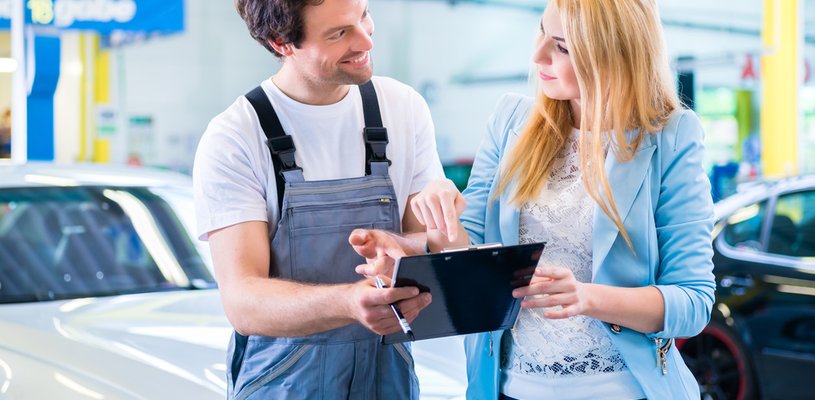
Buying a used car is great for saving money especially with the high prices of buying the equivalent newer model. It remains a popular route for car buyers with nearly 8 million used cars sold in 2018. When purchasing a used car, there are various pitfalls that must be avoided to get a good deal. Essentially, when selecting a used car you need to know what you’re getting and what price you should pay for it. By taking the right precautions, you can ensure you have no costly repairs to make from a poorly kept used car.
What To Look For When Buying a Used Car?
Follow Nationwide Cars’ checklist below when buying a used car.
1. Check Vehicle History
When buying a second-hand car, checking its history is vital. The check will highlight any outstanding car finance, is reported stolen or has been written off at some point. It’s important when getting a vehicle history check you select a company that will conduct a thorough search. Some companies offering cheaper checks will not show if a car is subject to a logbook loan agreement.
Taking home a used vehicle only to find it has been registered as stolen is a bad experience for any driver - especially after the elation of purchasing. Buying a car that is under a logbook agreement will mean you have no ownership over the vehicle. This could also make you liable for the debt the previous owner has on the car.
A used car check commands a small fee, but it’s worth it in case of avoiding all potential worst-case scenarios.
2. Vehicle Value
Private sellers can sometimes inflate the price of their vehicle, placing more sentimental value over the real price. By checking price guides, car magazines and looking at similar used models for sale online you can find the true market value of the car.
Check for any blemishes as it might mean there's an issue with the car, bringing down its value.
3. Arrange a Car Viewing
Always arrange a car viewing to ensure you get a good look at the vehicle before putting money down. Make sure you view the car in daylight on a pleasant enough day because nights and rainy days could hide dents and scratches. Make sure you look beneath the car and under the bonnet just in case of rust and signs the car was involved in an accident.
4. Ask the Seller Questions
The seller should know their vehicle inside and out so don’t be afraid to test them. Ask about its features, service history and previous MOT certificates. Any doubts you might have can be quashed by getting a vehicle history check.
5. View the Registration Document
Inform the seller you would like to see the car’s V5C registration. A V5C document contains details of its registered keeper and all the ones it’s had previously. You should be given a red V5C and not a blue document. This is because the Driver and Vehicle Licensing Agency (DVLA) issued the new look red version from 2010. No legitimate blue V5C documents should be in circulation.
6. Check the VIN
When viewing a second-hand car, always search for its VIN (Vehicle Identification Number). The VIN is mostly found at the base of the windscreen, under the bonnet and in the car’s framework, usually under the carpet by the driver’s seat. The number found on the car should match the VIN stated in the V5C registration.
7. Locks and Windows
A sure sign that a car has been broken into at some point is with the locks. Is one set of locks different to another? Windows that don’t shut properly are also a sign of forced entry. Make sure all the windows open and close as expected. If the car has a sunroof, also check that opens and closes normally.
8. Check for Clocking
Does the mileage of the car look too low for the age and appearance of the car in question? If so, the car may have been tampered with, using a technique known as clocking. A car that has been clocked has had its miles wound back in an attempt to increase its value and asking price. For every 1,000 miles removed, the value rises significantly.
9. Cut-and-Shuts
When pieces of two or more cars are illegally welded together, it becomes known as a “cut-and-shut”. Often these vehicles have often been damaged by crashes. The process of “cut-and-shut” is illegal. Look for hidden welds by pulling up carpets and trims inside the vehicle. Check for sloppy paintwork or colours don’t match as intended. A full history check identifies if a car is lost or stolen and there’s a small chance both cars of a cut-and-shut could be lost and stolen.
10. Check the Tyres
The condition of the tyres is a great indicator of the true condition of the car. Make a note of the tread depth and side-wall damage. Tyres that have uneven wear could mean there is an alignment issue with the wheels.
11. Test Drive The Car
The tried and tested method for looking at a used car is the test drive. Before doing so, you must make sure you’re insured to take a test drive in another person’s car. DOC (Driving Other Cars) Cover allows you to do this with the permission of the owner. Take at least half an hour in your drive and try the car at various speeds to test the steering, brakes and gears. Are there any odd noises as you travel? Do all the electrics work?
Buy your next car with the help of Nationwide Cars and you can save money on buying directly privately or through a car dealership. Contact us today for help finding your next vehicle!


